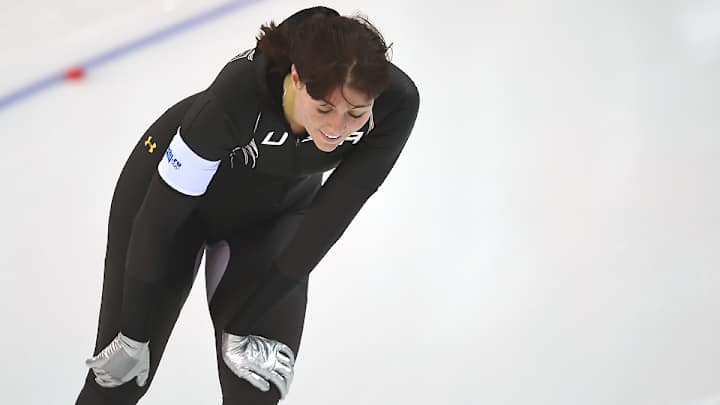More dismay, no answers for U.S. after women's 1000m speed skating

SOCHI -- There are a million different variables that make up a race -- the time of day, the location, the temperature, what a skater ate for breakfast, the ice, the crowd, the lights. But with a yet another poor showing from Team USA at the Adler Arena oval, there is one big variable that’s beginning to raise eyebrows: the revolutionary skin suit the team debuted for Sochi.
After the U.S. women underperformed in the 500-meter race Tuesday, Shani Davis finished eighth a day later in the 1000 meters, a race in which he entered the two-time defending Olympic champion.
Thinking perhaps there might be some inexplicable drag created from the suit, the four Team USA long-track skaters had a piece of rubber put on to cover a mesh vent for the women’s 1000-meter race Thursday. But still, the results were not what they expected.
Coming into the Olympic Games, the women’s 1000 meters was American territory. Aside from Davis, it was the U.S.’ best chance to earn a medal -- even two. Brittany Bowe holds the world record at the distance (1:12.58), and Heather Richardson was the first American woman in eight years to win the World Sprint crown in 2012-13. In this event, they have both finished on the podium in all four World Cup races this season, and Richardson hasn’t finished lower than second.
They were easy favorites to go 1-2 in Sochi; they ended up going 7-8. Richardson finished 1:15.23, and Bowe went 1:15.47, well over a second behind winner Hong Zhang, who won gold with a time of 1:14.02.
“I really don’t know [what happened]. I’m at a loss for words right now,” U.S. speed skating coach Ryan Shimabukuro said after the race. “Definitely didn’t expect that. Competitions write their own story. I don’t have to give a quote. The results are on the board.”
The U.S.’s other two entrants, Sugar Todd and Kelly Gunther, meanwhile, finished 32nd and 33rd out of the 34 skaters who did not fall.
When asked if there might be a problem with the Under Armour suits, which claimed to reduce drag with dimpled fabric on the forearms, head and lower legs, Shimabukuro wouldn’t comment. “We have to race in the suits,” he said. “And Under Armour has been a great partner for us.”
“It’s impossible to pinpoint one, two or three things [at fault] when there are so many different variables,” Bowe said. “We all gave it our all out there today, and the three [medalists] deserved it.”
She and Richardson both lost significant time on the back-end of the race, unable to maintain the burst of speed they put up at the start. The reasons for that, it seems, were inexplicable.
Giving credit to the women who beat them, both said they felt good and thought they raced well. It just wasn’t enough.
“I wish I had the answer,” Bowe said. “Are we where we wanted to be? No. But that’s part of it, and we just move on from here.”
With the women’s 1500-meter race scheduled for Sunday, the teammates, training partners and roommates now have just three days to find answers to the many questions arising in Sochi.
Bowe might have the best chance at the podium in that distance, but at this point, best chances for Team USA are not as promising as they seemed when the Olympics began.
So for another few days, at least, the U.S.’s 12-year drought without a women’s speed skating medal goes on. And if they don’t snap the streak here in Sochi, there may be bigger questions for U.S. speed skating than what’s wrong with a polyurethane suit.
WOLFF: Shani Davis reveals mortality with disappointing 1000 meters
